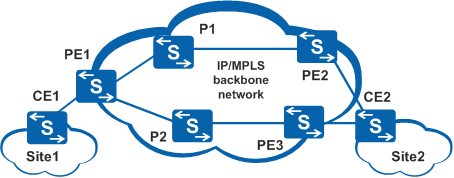Configuring VLL FRR
Context
On a CE asymmetrical network:
The primary and secondary IP addresses need to be configured on the interface on the CE connected to the PE through a single link. When the primary link is available, the CE in the single-homed site uses the primary IP address to communicate with the remote CE. When a fault occurs on the primary link, the CE communicates with the remote CE by using the secondary IP address.
The secondary PW cannot transmit data when the primary and secondary paths work normally. On the CE in the dual-homed site, if the interface of the secondary PW borrows the IP address of the interface of the primary PW, the following situations occur:
None revertive switching cannot be configured.
The local CE has two equal-cost and direct routes to the remote CE. The destination addresses and next hops of the two routes are the same, and the route that passes through the secondary PW is invalid.
If CEs exchange routing information by using routing protocols, you need to modify the cost or metric of the AC interface of the secondary path to be greater than that of the AC interface of the primary path. The local CE cannot communicate with the peer CE, but can communicate with other user devices.
If CEs use static routes to exchange routing information, you need to modify the preference of the backup route to be lower than that of the primary route (the greater the value, the lower the preference) by using the ip route-static dest-ip-address mask out-interface preference preference-value command.
Pre-configuration Tasks
Before configuring VPN FRR, complete the following tasks:
Configure basic VLL functions.
Configure CEs to exchange routing information by using routing protocols or static routes.
Set up an LSP tunnel or a TE tunnel between the PEs.
You also need to configure tunnel policies when VLL services need to be transmitted over TE tunnels or when VLL services need to be load balanced among multiple tunnels to fully use network resources. For details, see step 1 in Configuring and Applying a Tunnel Policy.
